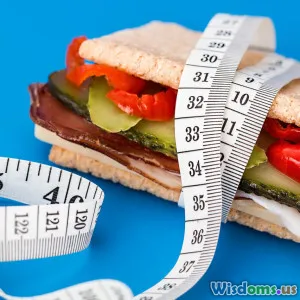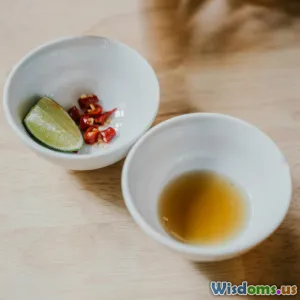
Simple Gardening Tips for Beginners
7 min read Discover essential, easy gardening tips for beginners to grow fresh food and transform your green space with confidence and joy. (0 Reviews)
Simple Gardening Tips for Beginners
Gardening, especially for food, is more accessible today than ever. Many beginners feel overwhelmed by the idea of cultivating their own fruits, vegetables, and herbs, but the truth is, starting a garden can be a rewarding and surprisingly straightforward journey. Imagine plucking sun-ripened tomatoes right from your backyard or garnishing your dinner with fresh mint leaves grown by your own hands. This guide will walk you through essential, practical tips to kickstart your food garden with confidence.
Why Start a Food Garden?
Growing your own food offers several tangible benefits beyond the obvious freshness factor. According to the USDA, home gardening can promote a healthier diet — gardeners are more likely to consume more vegetables and fruits than non-gardeners. Beyond nutrition, gardening also fosters mindfulness, physical activity, and sustainability by reducing your carbon footprint.
The initial hurdle is often simply knowing where and how to begin. By understanding the foundational gardening concepts, new gardeners can avoid frustration and cultivate thriving, edible plants.
1. Choose the Right Location
One of the critical elements for a successful food garden is the right location. Most edible plants need 6-8 hours of direct sunlight daily. Find a space that meets this sunlight requirement and has good drainage. For urban gardeners, where yard space is limited, container gardening on balconies or window sills is a viable alternative.
Practical Tip:
Test sun exposure throughout the day for several spots before planting. If natural light is limited, opt for leafy greens like spinach and lettuce which tolerate partial shade.
2. Start Small and Simple
A common mistake new gardeners make is taking on too much at once. Starting with a small plot or a few containers can help you learn the essentials without feeling overwhelmed.
Simple Crops for Beginners:
- Tomatoes: Popular and relatively easy; they thrive in containers or garden beds.
- Lettuce and Greens: Fast growers and forgiving of shade.
- Herbs: Basil, parsley, chives, and mint can grow in small pots and inside.
These plants provide frequent harvests, motivating you with visible results.
3. Understand Your Soil
Good soil is the cornerstone of a flourishing garden. Healthy soil provides nutrients, retains moisture, and encourages strong root development.
Soil Testing:
Before planting, conduct a soil test to understand pH levels and nutrient content. Soil testing kits are affordable and easy to use; local agricultural extensions often provide free or low-cost testing.
Enhancing Soil Quality:
- Incorporate organic matter like compost or well-rotted manure to boost fertility.
- Avoid compacting the soil; loosen it with basic tools to improve aeration and drainage.
Example: A gardener in Chicago notes her tomatoes flourished after she enriched sandy soil with homemade compost and shredded leaves.
4. Water Smartly
Overwatering is a common pitfall. While plants need consistent moisture, soggy soil can suffocate roots and foster disease.
Watering Best Practices:
- Water deeply and less often rather than superficial daily sprinkling.
- Aim to water early morning to reduce evaporation.
- Use mulch (straw, wood chips) to retain moisture and reduce weeds.
A study from Clemson University highlights that mulched gardens retain up to 30% more moisture and reduce water needs considerably.
5. Choose Disease-Resistant and Local Varieties
Select plant varieties known for their resilience and suitability to your local climate. Local nurseries can recommend strains that withstand common pests and diseases.
Example: The 'Roma' tomato variety is notable for disease resistance and is a favorite among Midwest gardeners.
This knowledge reduces chemical use, making your garden eco-friendlier.
6. Learn to Identify and Manage Pests Naturally
Rather than defaulting to chemicals, embrace integrated pest management:
- Encouraging beneficial insects like ladybugs and hoverflies.
- Using physical barriers like row covers.
- Companion planting (e.g., marigolds to deter nematodes).
Such methods resort to nature’s balance — beneficial for your garden and your family’s health.
7. Keep a Garden Journal
Track your planting dates, weather conditions, successes, and failures. Over time, this diary becomes a personalized map to what works best in your environment.
Many beginners do not realize how valuable this habit is until their second or third season when they are better able to anticipate seasonal changes and plant needs.
8. Harvesting and Enjoying Your Produce
Timing your harvest is critical. Vegetables picked at peak ripeness offer the best flavor and nutritional value. For instance, snap peas are sweetest when pods are bright green and tender.
Eating fresh from your garden empowers you to connect food directly from soil to table, enhancing your cooking and nutrition.
Conclusion
Starting a food garden need not be complicated or demanding. With thoughtful preparation, patience, and these actionable tips, any beginner can cultivate a garden that yields fresh, homegrown raspberries for your morning yogurt or crisp tomatoes for your summer salads. Remember to embrace trial and error — gardening is as much an art as it is a science. As acclaimed gardener Monty Don says, “Gardening can fix almost anything.” Your journey in growing edible plants is not just about food; it’s about nurturing life and savoring the fruits of your effort.
Happy gardening!
Rate the Post
User Reviews
Popular Posts




















